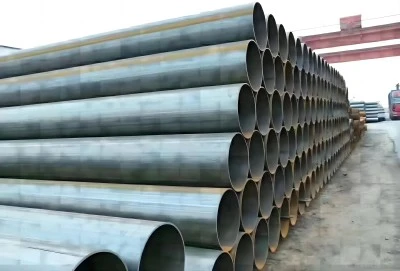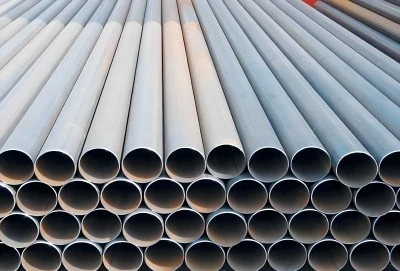Whether you're involved in construction, engineering, or industrial applications, understanding the composition and properties of S235 steel pipe is crucial.
|
|
|
Composition of S235 Steel Pipe
S235 steel pipe is a low-carbon steel known for its excellent weldability and formability. The "S" in S235 stands for structural steel, while "235" refers to the minimum yield strength of 235 MPa. But what exactly goes into making this popular steel grade?
The primary alloying elements that define the properties of S235 steel include:
- Carbon (C): 0.17% maximum
- Manganese (Mn): 1.40% maximum
- Silicon (Si): 0.35% maximum
- Phosphorus (P): 0.035% maximum
- Sulfur (S): 0.035% maximum
These percentages may vary slightly depending on the specific grade of S235 steel, but they generally fall within these ranges. Each element plays a crucial role in determining the steel's characteristics and performance.
Carbon, the most important alloying element in steel, primarily influences the strength and hardness of S235 steel pipe. The relatively low carbon content in S235 steel (maximum 0.17%) contributes to its excellent weldability and formability, making it ideal for various applications where these properties are essential.
Manganese, the second most significant alloying element in S235 steel, enhances strength and hardenability. It also helps in deoxidizing the steel during the manufacturing process, improving its overall quality. The presence of manganese contributes to the steel's ability to withstand wear and tear in demanding environments.
Silicon acts as a deoxidizer and helps improve the steel's strength. It also enhances the steel's resistance to scaling at high temperatures, which can be beneficial in certain applications.
Phosphorus and sulfur are typically considered impurities in steel, and their content is kept to a minimum in S235 steel. However, small amounts of these elements can have some positive effects, such as improving machinability in certain grades.
Influence of Alloying Elements on S235 Steel Pipe Performance
Carbon: As mentioned earlier, the low carbon content in S235 steel pipe is key to its performance characteristics. It provides a balance between strength and ductility, making the steel easy to form and weld. This low carbon content also contributes to the steel's toughness, allowing it to absorb impact without fracturing.
Manganese: The presence of manganese in S235 steel pipe significantly enhances its strength without compromising ductility. It also improves the steel's hardenability, which is particularly important in thicker sections of the pipe. Manganese helps in grain refinement, leading to better overall mechanical properties.
Silicon: While present in smaller quantities, silicon plays a vital role in deoxidizing the steel during production. This helps in reducing the occurrence of porosity and inclusions, resulting in a cleaner and more uniform steel structure. Silicon also contributes to the steel's strength and improves its resistance to high-temperature oxidation.
Phosphorus and Sulfur: Although these elements are kept to minimum levels in S235 steel, they can have some beneficial effects. Phosphorus can increase strength and hardness slightly, while sulfur, in controlled amounts, can improve machinability. However, their contents are carefully limited to prevent negative impacts on weldability and toughness.
The combination of these alloying elements results in S235 steel pipe that offers:
- Excellent weldability, making it suitable for various construction and fabrication applications
- Good formability, allowing for easy shaping and bending without compromising structural integrity
- Adequate strength for many structural applications
- Good toughness, especially at room temperature
- Resistance to atmospheric corrosion, particularly when used in appropriate environments
These properties make S235 steel pipe a popular choice in construction, infrastructure projects, and various industrial applications where a balance of strength, formability, and weldability is required.
Grades and Variants of S235 Steel Material
S235 steel is available in several grades and variants, each tailored to specific applications and performance requirements. Understanding these different grades is essential for selecting the right material for your project. Let's explore the main variants of S235 steel:
1. S235JR: This is the most common grade of S235 steel. The "JR" designation indicates that it has minimum impact energy of 27J at room temperature (20°C). S235JR is suitable for general structural applications and is widely used in construction.
2. S235J0: This grade offers improved impact toughness compared to S235JR. It has a minimum impact energy of 27J at 0°C, making it suitable for applications where slightly higher toughness is required, especially in colder environments.
3. S235J2: This is the highest quality grade among the S235 variants. It offers superior impact toughness, with a minimum impact energy of 27J at -20°C. S235J2 is ideal for applications requiring high toughness at low temperatures.
4. S235JRH: The "H" suffix indicates that this grade is specifically for hollow sections. It's commonly used in the production of structural hollow sections and tubes.
5. S235J0H and S235J2H: These are the hollow section variants of S235J0 and S235J2, respectively, offering improved toughness properties for tubular applications.
Each of these grades can be further modified based on specific requirements:
- N (Normalized or Normalized Rolled): This designation indicates that the steel has undergone a normalizing heat treatment or has been normalized rolled, resulting in a fine-grained structure with improved toughness.
- M (Thermomechanically Rolled): This process involves controlled rolling and cooling, resulting in a finer grain structure and improved strength and toughness without the need for additional heat treatment.
The choice between these grades and variants depends on factors such as:
- The specific application and its structural requirements
- The operating temperature range
- The need for enhanced weldability or formability
- Environmental conditions (e.g., exposure to corrosive elements)
- Regulatory standards and project specifications
It's worth noting that while S235 steel pipe is widely used, there are situations where higher strength grades (such as S275 or S355) might be more appropriate. Always consult with a qualified engineer or materials specialist to determine the most suitable grade for your specific project requirements.
S235 Steel Pipe Manufacturer
As the demand for high-quality steel products continues to grow, manufacturers like Longma Group are at the forefront of producing premium S235 pipes. Longma Group, a leading S235 steel pipe manufacturer in China, offers a wide range of products to meet diverse industry needs. Their extensive inventory includes S235JRH, S235J0H, and S235J2H grades, with outer diameters ranging from 4" to 56" and thicknesses from 0.237" to 5.90". With a substantial stock quantity of 100-200 tons, Longma Group is well-equipped to meet your project requirements promptly and efficiently.
For more information about S235 pipes or to discuss your specific needs, please don't hesitate to contact Longma Group at info@longma-group.com. Their team of experts is committed to providing excellent products and services, ensuring you get the right pipe solution for your project.














